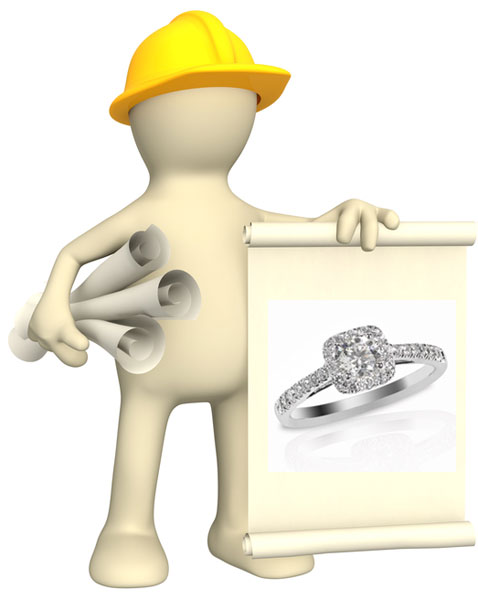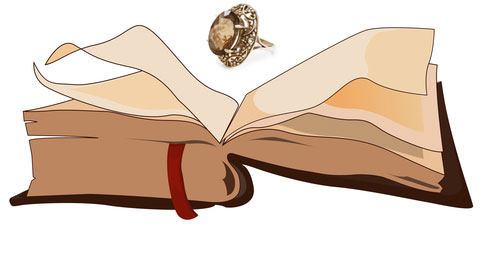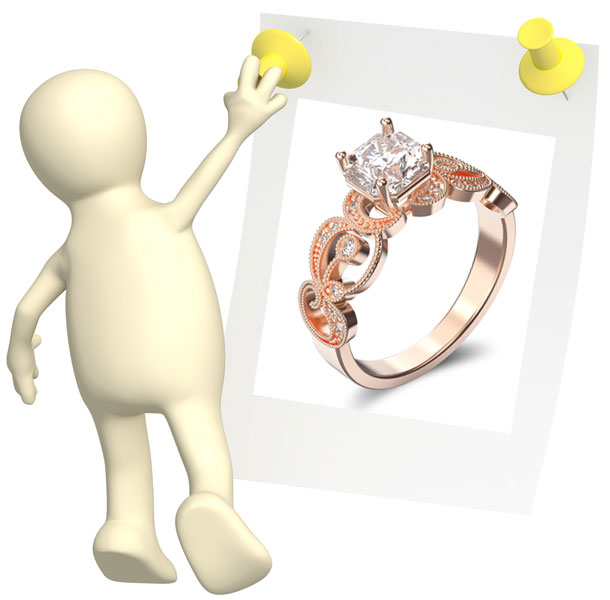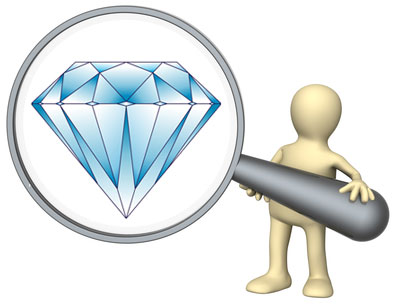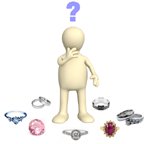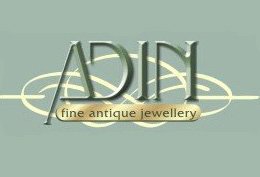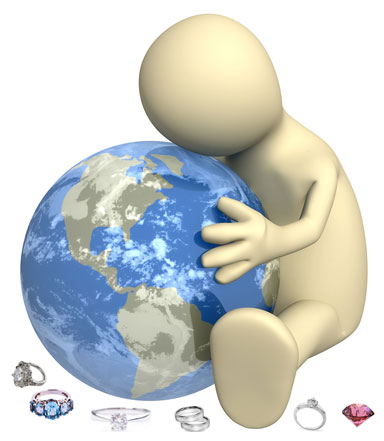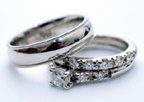My Grandmother's Antique Ring
by David M.
(Glendora,CA)

Possible Art Deco ring?
I have attached a picture of my Grandmother’s antique ring. She claims it is from Europe and handed down. She came over to the US after WW2 from Belgium. She was born in 1930. The inside of the ring only has 14k and 585. No maker’s mark?
How do I know what era it is from? Is it a so called cocktail ring? Art Deco? Should I get it appraised? I have attached pictures. It has the center ruby or garnet with 6 small triangular rubies/garnets and 16 very small diamonds.

Hi David,
That is a really beautiful ring – but from the information you provided it does not seem likely that the ring was made in Europe. Instead, the ring was probably made in the United States.
One key indication that the ring was crafted in the United States is the 14k stamp. In Europe, the karat of gold is spelled carat – so rings in Europe when marked with this type of hallmark or fineness stamp are usually marked 14ct. The 585 stamp is a reference to the amount of pure gold in the ring as 14k gold rings are 58.5% gold by weight.
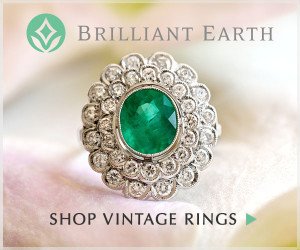
Due to hallmarking laws in many European countries too, rings with a hallmark stamp are usually accompanied by at least a maker’s mark stamp as well.
As to what era the ring may be from – it is possible to narrow down the potential eras through the ring’s gold karat content, style and inside stamp.
Rings made with 14k gold did not become common until around the early 1900s – and 14k gold did not become really popular until the later Art Nouveau period, and then it was used throughout the Art Deco era as well.
The hallmark stamp is not accompanied by a maker’s mark which can also help to narrow down the time the ring may have been created. Many rings crafted in the U.S. before the 1900s do not contain any stamps – even a hallmark stamp.
Stamps on rings in the U.S. began to be used more often after the 1906 U.S. National Gold and Silver Stamping Act was passed. After the Act was passed, gold and silver rings were often stamped with a hallmark stamp (like 14k) as a guarantee of their gold or silver content but were not necessarily accompanied by a maker’s mark. It was not until this law was amended in 1961 that manufacturers and jewelers were required to place their maker’s mark next to a hallmark stamp if they placed hallmark stamps on their products.
So, taking these points in mind it is likely that the ring was crafted in the United States sometime between 1906 and 1961.
Regarding the style of the ring, it does have a decidedly Art Deco look to it – it’s difficult to tell from the pictures, but the decorative features on the side of the center stone especially seem to have an Art Deco-like style, and the ring’s design in general has that geometric flair that was so particular to the Art Deco years. Rubies and garnets too were popular during this period of time – but it is also possible that the ring could have been crafted in the later years of the Retro period.
Jewelry designs during the Retro period were heavily influenced by the Art Deco age and 14k gold and red gemstones were extremely popular too after World War II gold restrictions were lifted in 1944. The style of the ring does not seem very indicative of the Post Modern age, or the popular cocktail rings that were all the rage in the 1950s through the 1970s.
With the style of the ring added to all the other factors, it is possible that the ring was crafted sometime around the 1920s to the late 1940s.
As far as your Grandmother’s belief that the ring was from Europe – it is quite possible that a ring crafted in the U.S. during these years made its way to Europe. Because of the huge economic booms that took place in the 1920s before the Depression, plus World War II and advances in modern-day travel, the 1920s through the 1940s were marked by a huge increase in travel including adventure trips and overseas holidays.
Perhaps someone traveled with the ring from the U.S. to Europe, and then the ring somehow came into your family’s possession.
Should you get the ring appraised?
Definitely! While an appraisal by a certified appraiser is an investment, the appraiser will be able to provide essential info about the ring including whether the center stone is a ruby or garnet, the condition of the center stone, and whether the side stones are white sapphires or diamonds – if the stones are diamonds the appraiser will provide info on the clarity, cut, color and carat values of these diamonds. An appraiser too may be able to narrow down the time the ring was crafted even more, based on how the gemstones/diamonds were set and cut. The appraisal will be a valuable source of information to any members of the family that you would like to pass the ring down to as well.
And last but not least, the appraiser can assess the condition of the ring and make sure all the stones are secured.
If you do decide to have the ring appraised, I highly recommend locating an appraiser that has gemological and appraiser certifications by the American Gem Society. You can find your nearest AGS appraiser through the locator tool on the AGS website.
Do write back if you have any additional questions – and we would love to hear an update on any appraisal information if you decide to have the ring appraised!
Suzanne Gardner
Everything Wedding Rings
Recommended & Trusted Jewelers
Our Advertisement Policy
Adin Fine Antique Jewelry
Use Code=Everything-Wedding-Rings
For a 5% Discount







